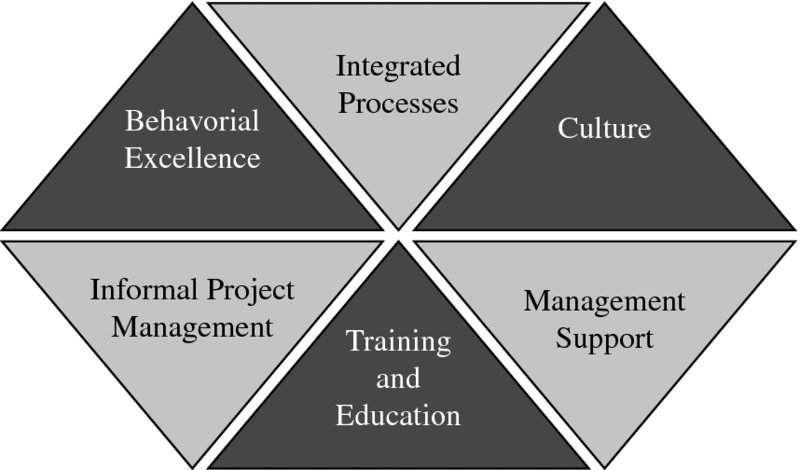5Integrated Processes
5.0 INTRODUCTION
Companies that have become extremely successful in project management have done so by performing strategic planning for project management. These companies are not happy with just matching the competition. Instead, they opt to exceed the performance of their competitors. To do this on a continuous basis requires processes and methodologies that promote continuous rather than sporadic success.
Figure 5-1 identifies the hexagon of excellence. The six components identified in the hexagon of excellence are the areas where the companies excellent in project management exceed their competitors. Each of these six areas is discussed in Chapters 5 to 10. We begin with integrated processes.

Figure 5-1. Six components of excellence.
Source: Reprinted from H. Kerzner, In Search of Excellence in Project Management (Hoboken, NJ: Wiley, 1998), p. 14.
5.1 UNDERSTANDING INTEGRATED MANAGEMENT PROCESSES
As we discussed in Chapter 1, since 1985 several new management processes (e.g., concurrent engineering) have supported the acceptance of project management. The most important complementary management processes and the years they appeared to be integrated into project management are listed next. It should be understood that many of these processes were introduced years before they were integrated into project management processes.
- 1985: Total quality ...
Get Project Management Best Practices: Achieving Global Excellence, 4th Edition now with the O’Reilly learning platform.
O’Reilly members experience books, live events, courses curated by job role, and more from O’Reilly and nearly 200 top publishers.

